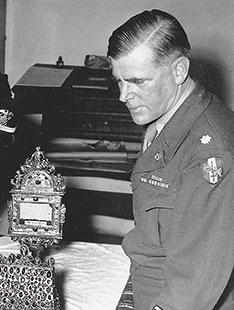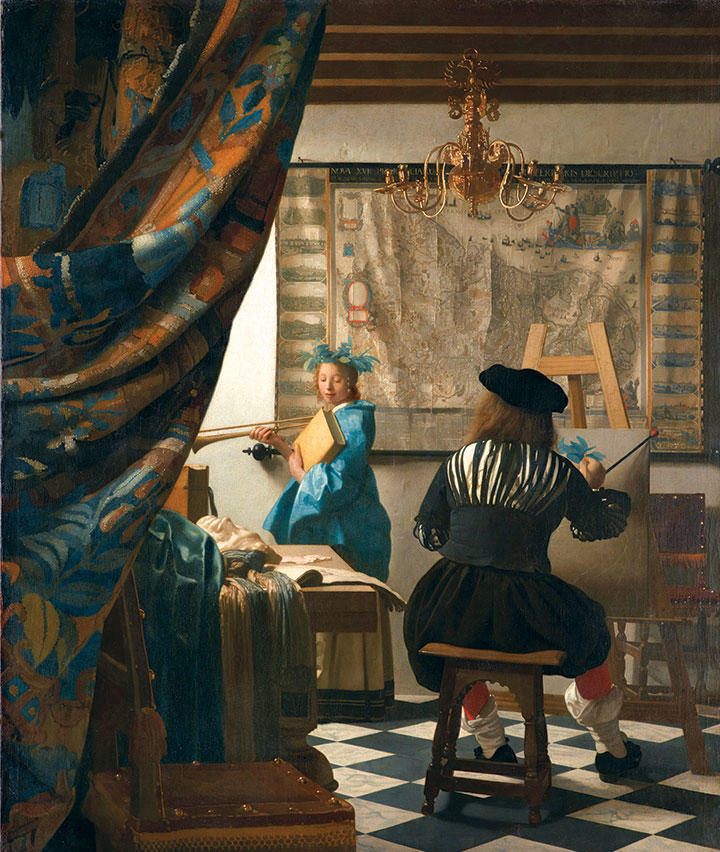Few visitors to Princeton are escorted by armed guards, and fewer still can claim a close, if involuntary, association with Adolf Hitler. But then there is nothing ordinary about The Art of Painting, one of the foremost works of Johannes Vermeer and the Dutch Golden Age.

In the judgment of the National Gallery of Art, the masterpiece embodies the hallmarks of Vermeer’s “artistic genius,” including “a carefully observed 17th-century Dutch interior illuminated by softly diffused light, exquisitely painted details, and a frozen moment imbued with psychological depth.” The museum went further, declaring the painting “stands apart from his other works in its imposing scale and pronounced allegorical character.”
Such was the treasure that arrived on campus for an eight-day exhibition May 22, 1950 — a treasure that the National Gallery’s founding benefactor, Andrew W. Mellon, had unsuccessfully sought to buy for $1 million in 1935. Hitler met with more success, and in 1940, he purchased The Art of Painting from its aristocratic Austrian owner for considerably less, intending to include it in his grandiose but never-realized Führermuseum.
As the tide of war turned against the Axis, Vermeer’s painting, along with thousands of other artworks, was secreted in an Austrian salt mine before narrowly escaping destruction at Nazi hands. The fate of this extraordinary trove was entrusted to the Allied armies’ Monuments, Fine Arts, and Archives personnel, informally known as the Monuments Men, and it was one of their leaders, Lt. Col. Ernest T. DeWald *1916, who would later bring The Art of Painting to the Princeton University Art Museum, which he directed from 1947 to 1960.
An authority on illuminated manuscripts and Italian paintings, this professor-turned-officer served in North Africa, Italy, and Austria, where he played a key role in the preservation of cultural artifacts and the restitution of looted artworks. In appreciation of his labors, the Austrian government loaned The Art of Painting to Princeton, a work that was — and to this day remains — one of the country’s most prized possessions.
John S. Weeren is founding director of Princeton Writes and a former assistant University archivist.












No responses yet